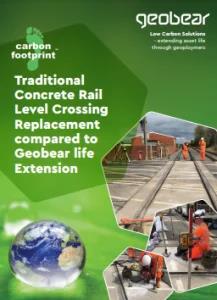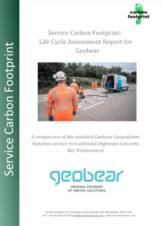Tel
400-1000-286
Low Carbon Solutions
Geobear’s solutions have been assessed by Carbon Footprint Ltd and are certified to emit significantly less carbon in comparison to traditional methods.
A number of reports have been collated by Carbon Footprint Ltd and KLH Sustainability regarding the carbon emissions of Geobear solutions in comparison to traditional methods.
Rail Carbon Study
Carbon Footprint Ltd recently certified a report that found using a Geobear approach to asset maintenance in the rail sector could lead to a 75% reduction in carbon emissions. The report identified a railway level crossing with stabilisation issues and compared the carbon emissions of a complete reconstruction to Geobear’s asset maintenance solution.
Highways Service Carbon Footprint Lifecycle Assessment Report
This report is a comparison of the standard Geobear geopolymer injection service vs traditional highway concrete bay replacement.
The assessment focuses on the embodied raw material emissions, the transport of these materials, and the manufacture/processing, distribution and disposal of the two services. The Geobear method extends the lifetime of the existing asset, whereas the traditional replacement method, results in a brand-new asset.
The Geobear Geopolymer Injection service produces less emissions than the traditional method. 5 Geobear treatments result in the avoidance of 62.43% of the modelled traditional method’s emissions.
UK residential Service Carbon Footprint Lifecycle Assessment Report
This report provides a comparison of the standard Geobear Geopolymer Injection service vs a traditional Piled Raft. It analyses the greenhouse gas emissions associated with the Geobear Geopolymer Injection service and a traditional Piled Raft method. This assessment focuses on the embodied raw material emissions, the transport of these materials, the manufacture/processing, distribution and disposal of the two services.
The carbon footprint of the Geobear Geopolymer Injection service produces 34.26% less emissions than the traditional method
 |  |  |